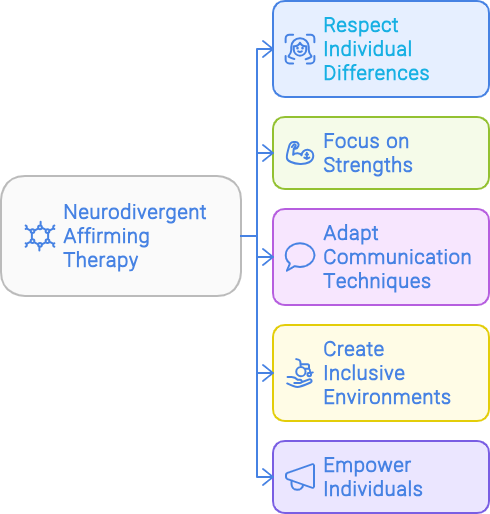
ADHD and Sensory Processing: Understanding the Connection
ADHD and Sensory Processing are areas that are not mentioned or talked about enough. Sensory processing refers to how your brain interprets and responds to sensory information—what you see, hear, touch, smell, and taste. This process happens seamlessly.
Research has demonstrated that ADHD people often show different sensory processing patterns, such as being over- or under-responsive to sensory input (Ben-Sasson et al., 2009; Parush et al., 2007). For women with ADHD, these challenges are often magnified, making it crucial to understand and manage sensory processing to improve overall well-being.
Sensory Sensitivity in ADHD: When the World Feels Overwhelming
In ADHD, sensory sensitivity can be compared to controlling the volume on a stereo. For some, the volume might be too high, and sensory inputs like touch, sounds, textures, or lights might be overwhelming. This can result in physical and emotional discomfort that interferes with daily life. Common symptoms of sensory sensitivity in ADHD include:
- Tags on clothing or certain fabrics may feel unbearable and irritating.
- Bright lights or loud environments may lead to discomfort, triggering headaches or anxiety.
- Textures or smells that seem normal to others can feel intense or overwhelming.
On the other end of the spectrum, some individuals with ADHD experience reduced sensitivity, needing more intense stimuli to feel regulated. This results in sensory-seeking behaviors, such as:
- Craving loud music to stay focused or calm.
- Seeking out strong tastes or smells.
- Enjoying fast-moving visuals or bright lights to engage attention.
This variability in sensory experiences means that people with ADHD can either avoid sensory input or actively seek it out, depending on their unique processing needs (Ghanizadeh, 2011).
These two sensory profiles can coexist, with the person alternating between seeking input to stay alert and avoiding it when feeling overwhelmed. ADHD brains can be more variable in their responses, leading to this mix of sensory needs. Managing this requires a balance of environments and strategies tailored to sensory needs, which can shift throughout the day.

Why Understanding Your Senses is Key for ADHD Management
Understanding sensory processing in ADHD is crucial because it impacts several key areas of life. Sensory input shapes how you interact with your environment, affecting your ability to focus, manage emotions, and complete tasks.
By paying attention to your sensory needs, you can:
- Improve focus:
- Enhance emotional regulation:
- Boost executive functioning:
- Strengthen social interactions:
- Improve work performance
- Reduce Anxiety
Focusing on your sensory processing style can help you function better in these areas.
Common Sensory Challenges in ADHD
Many people with ADHD report specific sensory processing challenges that can interfere with their daily lives. Some of the most common sensory processing difficulties associated with ADHD include:
- Noise Sensitivity: Trying to filter out background noise, such as conversations or repetitive sounds, can make it difficult to focus on tasks.
- Light Sensitivity: Bright lights, flickering screens, or harsh office lighting can cause headaches or make concentrating harder.
- Touch Sensitivity: Certain fabrics, tight clothing, or even the feeling of clothing tags can be unbearable for those with ADHD.
- Visual Overload: Busy, cluttered environments may feel overwhelming, making concentrating in visually stimulating spaces harder.
These sensory challenges can impact work, self-care, relationships, and well-being.
Sensory Seeking Behaviors in ADHD: The Need for Stimulation
Not everyone with ADHD experiences sensory overload; some individuals have a reduced sensitivity to sensory input and engage in sensory-seeking behaviors. Sensory seekers require more intense stimuli to feel grounded and balanced, and this can manifest in a variety of ways:
- Loud music or constant background noise may help some people with ADHD concentrate or feel calm.
- Solid smells or tastes, such as spicy foods or heavily scented products, might be preferred for providing more sensory input.
- Intense physical activities, such as jumping, running, or deep-pressure exercises, can provide a sense of regulation (Ghanizadeh, 2011).
While sensory-seeking behaviors can help individuals feel more in control, striking a balance is essential to avoid overstimulation.
How Sensory Processing Issues Contribute to Anxiety
Research shows that sensory issues in adhd people cause anxiety.
Anxiety from sensory overload is common in ADHD because the brain has to work harder to filter out unnecessary information, leaving little energy for emotional regulation (Lane et al., 2010).
The Impact of Sensory Issues on Executive Functioning in ADHD
Sensory processing directly affects executive functioning, a core area of difficulty in ADHD. When sensory input becomes overwhelming, the brain's resources are stretched thin, making it harder to focus on essential tasks. This can result in:
- Difficulty with planning and organizing daily tasks.
- Struggles with time management and meeting deadlines.
- Challenges with task completion, as the brain becomes distracted by uncomfortable sensory inputs (Mulligan et al., 2014).
The Role of Hormones in Sensory Processing for ADHD Women
Hormones play a significant role in how women with ADHD experience sensory processing. Throughout the menstrual cycle, fluctuations in estrogen and progesterone can amplify sensory sensitivity or lead to shifts in emotional regulation, making sensory overload more likely. Estrogen, in particular, is linked to how the brain processes dopamine—a neurotransmitter that plays a critical role in both ADHD and sensory processing (Quinn & Madhoo, 2014). Just before menstruation (when estrogen levels drop), ADHD women may find that sensory stimuli, such as touch, noise, or light, become even more overwhelming (Hantsoo et al., 2014). This heightened sensitivity can impact emotional regulation, making managing both physical and emotional responses to sensory input more challenging.
Perimenopause and menopause bring additional changes, with declining hormone levels leading to shifts in how the brain processes sensory information. Many women with ADHD report experiencing more frequent sensory overload during these stages of life, which can exacerbate symptoms of anxiety, irritability, and difficulty focusing.
Understanding the connection between hormonal changes and sensory processing can help women with ADHD better anticipate and manage their sensory needs throughout different life stages. This awareness is crucial for creating coping strategies that align with hormonal fluctuations and improve overall emotional regulation.
Managing Sensory Processing Challenges
- Use Timer Check-Ins to Manage Overwhelm and Boredom
Regularly checking in with yourself using a timer can help you identify when you’re becoming overwhelmed or understimulated. These check-ins allow you to pause, reflect, and adjust your sensory input by either removing stimuli or seeking more stimulation. Whether you need a break from bright lights or crave a walk to get moving, using this self-awareness tool keeps your senses balanced throughout the day. - Creating Your Personalized Sensory Kit
Building a sensory kit customized to your sensory preferences and triggers is an effective way to manage overwhelm. This kit might include a soft blanket, noise-canceling headphones, fidget toys, or aromatherapy oils. The idea is to have calming or stimulating items easily accessible when needed, whether at home, work, or out in social settings. This kit becomes your go-to for regulating emotions and stress through sensory input. - Incorporating Sensory Breaks into Your Routine
Taking sensory breaks throughout the day helps you avoid sensory overload and allows you to recharge. These breaks can be as simple as stepping outside for fresh air, listening to calming sounds, or using a weighted blanket to reset. Taking short, intentional breaks based on your sensory needs is key. Doing so can reduce stress and improve your focus when returning to tasks. - Identifying Your Sensory Preferences and Triggers
Learning what sensory inputs you enjoy and what overwhelms you is foundational to managing ADHD. Some people find comfort in specific textures, sounds, or movements, while others may feel overstimulated by certain lights, noises, or environments. By identifying these sensory preferences and triggers, you can create environments that support your needs and avoid settings that cause stress or dysregulation. - Stimming as a Tool for Self-Regulation
Stimming, or engaging in repetitive behaviors like tapping, humming, or rocking, is a natural way to regulate sensory input. Stimming helps manage stress and can provide comfort when dealing with overwhelming environments. Instead of trying to stop these behaviors, the goal is to find safe and appropriate ways to incorporate stimming into your daily routine, especially when sensory overload is likely. - Using Your Senses to Soothe or Stimulate
You can use soothers or stimulators from your sensory toolkit depending on how you’re feeling—whether overstimulated or understimulated. If you need calming, try slow-paced activities like rocking, using a weighted blanket, or focusing on soft textures. If you need stimulation, engage in activities like listening to upbeat music, using a fidget toy, or walking briskly. Tuning into your body’s sensory needs improves emotional regulation and focus.
Conclusion: Understanding how Your Brain and Nervous System Work
Understanding the intricate relationship between ADHD and sensory processing is essential for improving the quality of life for individuals with ADHD. Sensory processing challenges—whether in the form of sensory sensitivity or sensory-seeking behaviors—play a pivotal role in shaping daily experiences, from managing focus and emotions to navigating social interactions and completing tasks. For women, hormonal fluctuations further complicate this relationship, amplifying the need for individualized strategies to manage sensory input.
By acknowledging how sensory processing influences attention, executive functioning, and emotional regulation, individuals with ADHD can take proactive steps to mitigate these challenges. Implementing sensory-friendly environments, utilizing tools for sensory regulation, and advocating for one’s sensory needs are not just coping mechanisms—they are integral strategies that foster productivity, emotional stability, and overall well-being.
Incorporating this understanding into ADHD management empowers individuals to move beyond merely surviving their environments to truly thriving in them. By embracing their unique sensory needs, individuals with ADHD can unlock new levels of personal and professional success, achieving a more balanced and fulfilling life.





